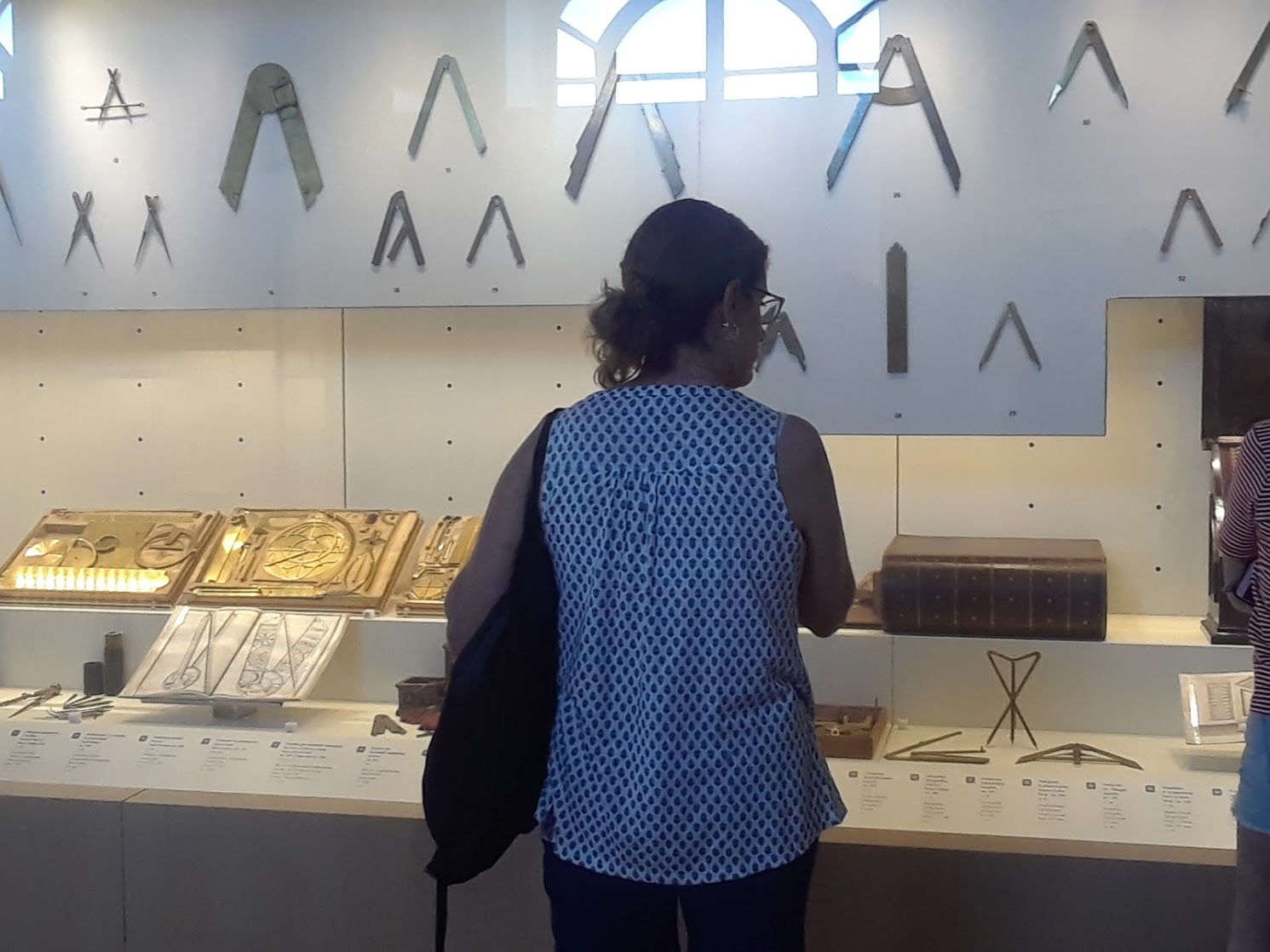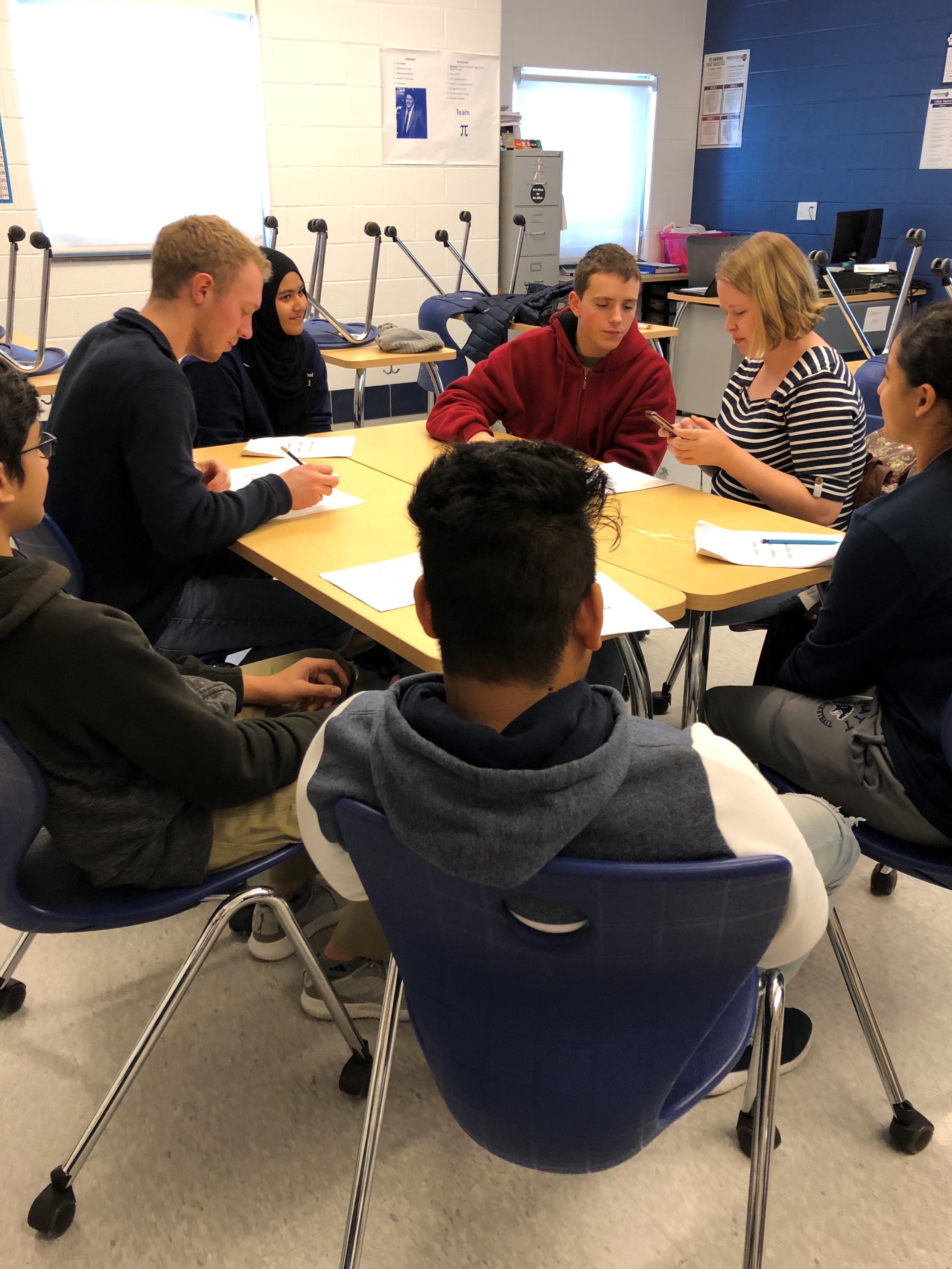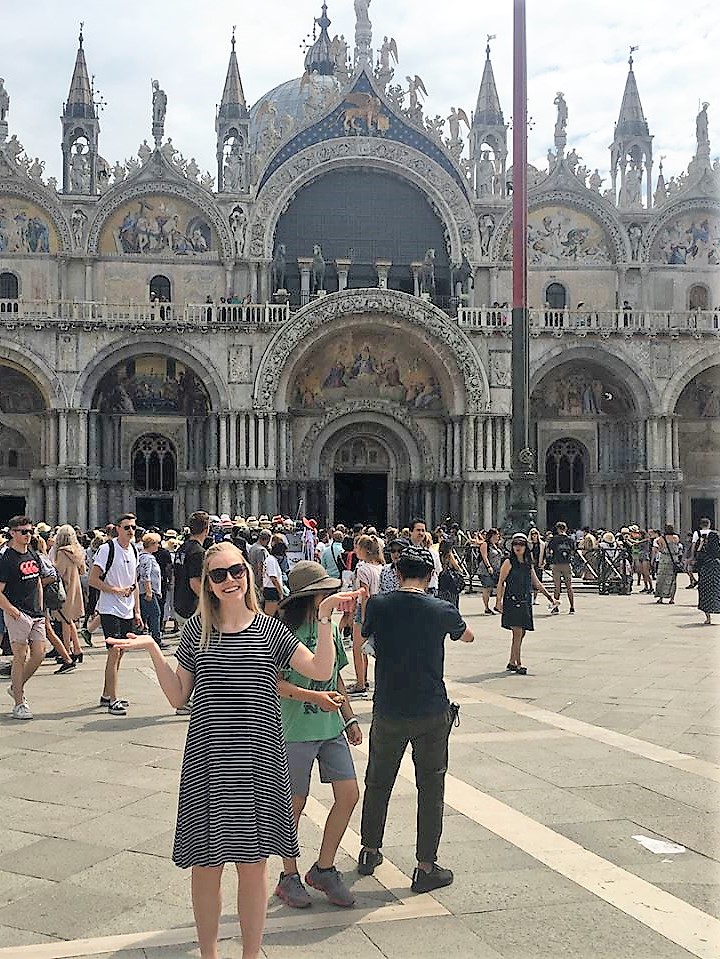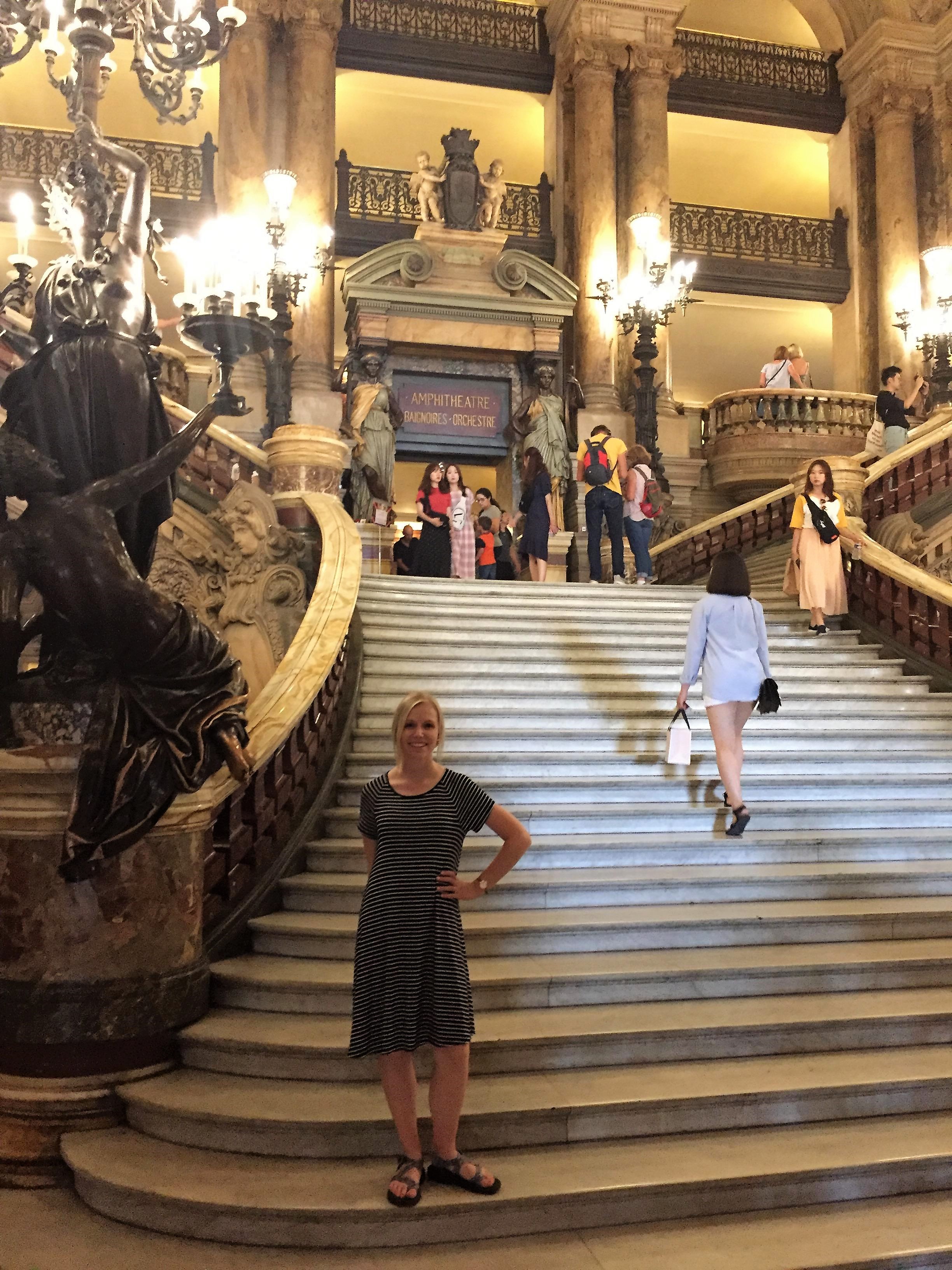[minti_dropcap style=”circle”]B[/minti_dropcap]ack in the ’80s, when Saturday Night Live was funny, Jon Lovitz did a skit called “Get to Know Me!” espousing how the lives of people (i.e. Steve Martin) benefited from knowing him. We believe the same is true of our 2019 Fellows and are, therefore, beginning a blog series to introduce many of our grant recipients throughout the summer.
For our first installment, we introduce you to a Fellow whose fellowship ranks among the most unique we’ve funded in almost twenty years. Get to know Mick Posner of Conrad High School in West Hartford, CT.
[minti_divider style=”3″ icon=”” margin=”20px 0px 20px 0px”]
 On why he designed this fellowship…
On why he designed this fellowship…
I am now in my 10th year of teaching American Sign Language (ASL), which was actually the first language I learned as a child because I was born deaf. As a faculty member of my high school’s World Languages department, I work with students in 9th through 12th grade. Students take my class to fulfill their World Language credit and to learn about the deaf community. More than 90% of my students have not been exposed to a sign language system until they take my class. I believe that students enjoy my class because they are being introduced to an entirely different culture that, in a sense, intertwined globally and for many of them, the challenge of communicating in different environments and situations is mutual.
Many people do not know that there are 200+ sign language systems around the world, each with their own grammar, vocabulary, influences and origins. Twice a year, my students complete a survey in order to share their feedback about my ASL classes. Consistently I receive the same inquiries — students have a strong interest in learning about unique deaf communities in other countries, particularly those shaped by linguistic and geographical barriers (such as the fact that deaf people in Cuba who are not allowed to drive and work full-time, among other government imposed restrictions.

(photo courtesy of Nunatsiaq News)
After conducting extensive research, I found very little exists regarding the Greenland Deaf Community (and deaf Inuits), thus leading me to the following learning experience that I wish to pursue: understanding how such an unique population survive in such a remote part of the world, despite their deafness, by becoming a student of Inuit Sign Language (ISL), which is the official sign language system of the Greenland Deaf Community. This fellowshipwill deepen students’ understanding of the human spirit’s resiliency and the importance of continuing learning and pursuing knowledge in sign language systems.
ISL is a dialect that is centralized around vocations (a large percentage of their vocabulary is focused on being able to communicate related to hunting and fishing) and survival skills. It is a language based purely on livelihood and survival in a very remote section of the world and would be a strong evidence of sign language’s relevance to a community that depends so much on a particular dialect to survive. There’s not many other languages like this, particularly in the form of a sign language system.

Celebrating the news with Principal Julio Duarte (left) and Superintendent of Schools Tom Moore
From this FFT experience I will have my students actively involved in the creation of online resources regarding different deaf communities around the world. In this project, students will include locations of community, what makes them unique, how they interact with the rest of their community at large, and the identification of unique signs necessary for survival.
On learning he is a 2019 Fellow…
When I first found out I was an FFT Fellow, I was overcome with an extraordinary sense of relief. The grant was something I had worked diligently on for four months, stemming from an idea I had from over a year ago based on articles I read the previous summer — quickly, that feeling turned into so much joy. My students were really excited for me — after it was announced, I asked if I could have a few minutes to call my wife. My 5th period class (that was when it was announced) voiced their support and understanding.
The impact on students already exists — I received several congratulatory and well-wishes emails from parents who shared that their students came home and told them about the FFT award. Along with a few additional parents who contacted me via social media, some of my seniors shared that they wish they could stay in high school for another year so they could hear about the experience (of course, I will see if I can extend an invitation to them when the time comes.)
[minti_divider style=”1″ icon=”” margin=”20px 0px 20px 0px”]
 Mick is the only member of his family who was deaf, yet his parents believed in having ASL as his first language, which he learned before English. You can learn more about his life experiences and his own family from the A&E documentary “Born this Way Presents: Deaf Out Loud.” He and his wife also own Posner Inclusion, a consulting firm that creates bridges between businesses and unique markets, such as the deaf population.
Mick is the only member of his family who was deaf, yet his parents believed in having ASL as his first language, which he learned before English. You can learn more about his life experiences and his own family from the A&E documentary “Born this Way Presents: Deaf Out Loud.” He and his wife also own Posner Inclusion, a consulting firm that creates bridges between businesses and unique markets, such as the deaf population.
 If you see an inordinate amount of people wearing blue or a puzzle piece lapel pin today, here’s why. Today is the 12th annual World Autism Awareness Day (#WWAD), established by Member States of the United Nations to raise awareness about people with Autism Spectrum Disorder (ASD) throughout the world. To show our support, Fund for Teachers proudly shares the work of Guin Geyer.
If you see an inordinate amount of people wearing blue or a puzzle piece lapel pin today, here’s why. Today is the 12th annual World Autism Awareness Day (#WWAD), established by Member States of the United Nations to raise awareness about people with Autism Spectrum Disorder (ASD) throughout the world. To show our support, Fund for Teachers proudly shares the work of Guin Geyer.

 Emily Frake (Camino Nuevo Charter Academy #2 – Los Angeles) also chose to pursue learning that supports students on the Autism spectrum. Emily used her Fund for Teachers grant to attend
Emily Frake (Camino Nuevo Charter Academy #2 – Los Angeles) also chose to pursue learning that supports students on the Autism spectrum. Emily used her Fund for Teachers grant to attend 
 For example, Naima toured the world famous
For example, Naima toured the world famous  Naima Hall is a teacher for the blind and visually impaired at
Naima Hall is a teacher for the blind and visually impaired at 






 Anna Beer’s book
Anna Beer’s book 



 Heather is an elementary music teacher in northwest Oklahoma City for Putnam City Schools. She has spent all four years of her teaching career at Lake Park Elementary, and currently serves on her school’s leadership team as the Specials Team Leader. Heather enjoys helping her students explore culture and history through music. You can see more images from her fellowship on Instagram
Heather is an elementary music teacher in northwest Oklahoma City for Putnam City Schools. She has spent all four years of her teaching career at Lake Park Elementary, and currently serves on her school’s leadership team as the Specials Team Leader. Heather enjoys helping her students explore culture and history through music. You can see more images from her fellowship on Instagram 


 John arrived at the Globe Theatre’s “Teaching Shakespeare Through Performance” workshop as a 58-year-old literature teacher and completed his fellowship as Ophelia, Hamlet’s love interest. He explains:
John arrived at the Globe Theatre’s “Teaching Shakespeare Through Performance” workshop as a 58-year-old literature teacher and completed his fellowship as Ophelia, Hamlet’s love interest. He explains: To clarify the broad scope of the holiday, Liz suggested using the picture book New Clothes for New Year’s Day
To clarify the broad scope of the holiday, Liz suggested using the picture book New Clothes for New Year’s Day  As you may recall, our fellowship was to attend the
As you may recall, our fellowship was to attend the  The most exciting take away from the Model Schools Conference has been the connections we made while there. Those connections have helped us to continue our learning, which will continue to impact our students.
The most exciting take away from the Model Schools Conference has been the connections we made while there. Those connections have helped us to continue our learning, which will continue to impact our students.





 Students wielding knives at
Students wielding knives at  Traci worked alongside chefs at
Traci worked alongside chefs at 

 [minti_dropcap style=”normal”]T[/minti_dropcap]his week marked the 70th anniversary of the
[minti_dropcap style=”normal”]T[/minti_dropcap]his week marked the 70th anniversary of the 
 Brian Peck & Zach McCullough II
Brian Peck & Zach McCullough II






 For more than a decade, Tim has empowered his students to take ownership over their education and to become independent learners while focusing on character and integrity. Throughout his teaching career, he has coached athletics at both the middle and high school levels and views the competition field as an extension of the classroom where students can push themselves.
For more than a decade, Tim has empowered his students to take ownership over their education and to become independent learners while focusing on character and integrity. Throughout his teaching career, he has coached athletics at both the middle and high school levels and views the competition field as an extension of the classroom where students can push themselves.
 Back in the Bronx, Anne worked with guidance counselors to introduce vocational planning in ninth grade and sought out student internship opportunities with community mentors. Her math classes pivoted to provide project-based problem solving with relevant applications in fields such as construction, plumbing and graphic design.
Back in the Bronx, Anne worked with guidance counselors to introduce vocational planning in ninth grade and sought out student internship opportunities with community mentors. Her math classes pivoted to provide project-based problem solving with relevant applications in fields such as construction, plumbing and graphic design. “Greater real-world math applications through authentic learning opportunities now promote career readiness in my classes,” said Anne. “And, for the first time this year, students are participating in paid internships, for which they develop job descriptions and maintain time sheets. It’s been an extraordinary experience for them and a dream come true for me to see them ultimately head into the workforce.”
“Greater real-world math applications through authentic learning opportunities now promote career readiness in my classes,” said Anne. “And, for the first time this year, students are participating in paid internships, for which they develop job descriptions and maintain time sheets. It’s been an extraordinary experience for them and a dream come true for me to see them ultimately head into the workforce.”

















 Nancy (pictured with a state selectman and superintendent at Noche Mexicana) has taught art for 31 years, a career that has included teaching sculpture to widows and orphans in Zambia and earned her Connecticut’s Outstanding Elementary Art Teacher award. She frequently exhibits her own work in galleries and museums, which you can see
Nancy (pictured with a state selectman and superintendent at Noche Mexicana) has taught art for 31 years, a career that has included teaching sculpture to widows and orphans in Zambia and earned her Connecticut’s Outstanding Elementary Art Teacher award. She frequently exhibits her own work in galleries and museums, which you can see